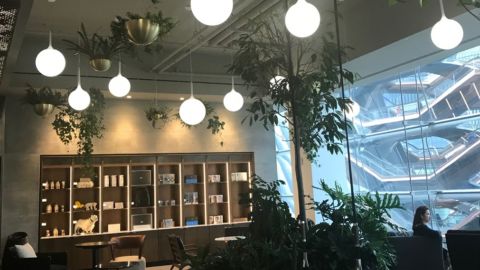It’s an eternal struggle within any organization: whether to devote time, money and resources to coming up with the Next Big Thing, or to focus on the mundane (but very necessary) job of Keeping The Lights On. Or as Peapod Chief Marketing Officer Carrie Bienkowski put it, “When we have a limited number of development hours and have to ask ourselves what our development team is working on from a roadmap standpoint, do we focus on brilliant basics or innovation?”
As any retailer knows, it’s not an academic question. If the scales are tipped too far in either direction, the results can be disastrous. And to make things even more complicated, it’s not always clear which category a particular project or initiative falls into. Sometimes “innovation” actually moves a company in the wrong direction, while a “brilliant basic” can produce something new that provides the retailer with real-world, measurable improvements.
{loadposition RIIAA}In presentations at eTail East in Boston, August 14-17, retail executives from Peapod, Dillard’s and Panera Bread shared examples of innovation gone askew as well as unexpectedly brilliant business basics.
Peapod: Thumbs Down For Pickup
Approximately three years ago, Peapod made “a big bet on pickup,” going from zero to 216 pickup points for its groceries within a six-month period, according to Bienkowski. The problem, and one that led to a major fiasco, was that Peapod was busy filling a need that wasn’t there: “Nobody wanted pickup,” she said.
“We thought we would tap into a whole new customer base that didn’t want delivery,” Bienkowski admitted, but these incremental shoppers didn’t materialize: “Pickup is still only 6% of our total sales,” she noted, adding that “Among customers already using delivery, 95% wanted to stay with the delivery option.”
It’s a cautionary tale for brick-and-mortar retailers such as Kroger and Walmart: “They’re focusing on pickup because that’s where their infrastructure is,” said Bienkowski.
Peapod has made changes to help avoid these types of misjudgments. “We had had ‘innovation’ as part of our equity tracker for a long time, but then we wondered whether customers really cared about whether we were innovative or not,” said Bienkowski. “Now we’re framing it as, ‘Does Peapod help me solve the question of what’s for dinner?’ For our customers, that’s what counts as innovative.”
Another change was structural: “We had a technology and marketing organizations that weren’t always working together,” Bienkowski noted. “So we hired a head of product, which is a standard role at most e-Commerce organizations. It was a joint hire and the person reports to the technology organization, but I probably spend more time with her than the CTO does. She sits with my team and is driving the roadmap on issues like persona research and leveraging our data and analytics teams.”
Dillard’s: Quality Time Beats Quantity Time
Like Peapod, Dillard’s faces tough choices in balancing innovation with the basics. “We have to pick and choose, so looking at the data means identifying what’s really moving the needle from the customer experience and sales perspectives,” said CTO Brent Cryder. “We still depend very heavily on our stores, so they have to be kept up and running: 70% of our department’s budget goes to maintaining in-store infrastructure.”
Dillard’s has, like many other department stores, had its share of “panic moments” about declining foot traffic. In its attempts to get customers to stay longer in its stores, “We spent time, and money, and kissed a lot of frogs,” said Cryder. “But eventually we realized that trying to get people to spend more time in a location is aiming at the wrong problem.”
The answer was to start “changing the function of the store,” said Cryder. “We want to ensure the store has everything they want right away, or if not, that it can deliver it to them. It’s not about trying to keep them there, it’s about having the things that they want there, and at the right times.”
To better match store offerings to customer needs, Dillard’s has been “investing heavily in supply chain innovations,” said Cryder. “One of the lessons everyone has learned from Amazon is that getting product as quickly as possible, or having it in the right place at the right time, is well worth the money you spend on that.”
Panera Bread: Kiosks Provide An Unexpected ‘Superpower’
In yet another proof that it’s nearly impossible to predict how innovation will be viewed by customers, Panera Bread’s introduction of ordering kiosks five years ago provided a different benefit than expected. “We thought this would be a ‘fast lane’ for customers,” said Mark Berinato, VP of Experience Design at the restaurant chain. Panera Bread locations serve the majority of their customers during mid-day lunch hours, creating a need to focus on speed and efficiency during these times. Another issue is that the Panera menu can be complicated, with numerous choices about sandwiches, toppings and side dishes. The retailer estimates that 30% to 40% of the kiosk’s users choose this option for its speed.
For other Panera customers, however, the kiosks’ benefit is that it provides them with a “sense of control” akin to a “superpower,” said Berinato. “It was the power of transparency, to see into the menu at their leisure.”
More recently, Panera has added functionality that allows shoppers to order using their own mobile devices. This has proven particularly attractive to those using Panera locations for business meetings, since it lets customers sit at the table first rather than stand in line to order.
This was a case where the innovation required changes to a business basic. The introduction of the mobile functionality forced Panera to adjust hiring and training skill sets for store associates to reflect new types of customer interactions. “When customers order at table and the associate brings them their food, they are thinking about [the associates] in a different way,” said Berinato. “We found that customers who order at the table are rating their interactions with these associates more positively than those that stand in line.” Berinato attributed the warmer feelings shoppers had for the table servers to the pressure of ordering items from a counter associate with a long line of other customers waiting.
Providing its customers with a positive impression of their Panera experience is proving vital to the chain’s success, as seen in the behavior of members of the My Panera loyalty program. “As the culture evolves and people have higher ‘food IQs,’ we find they are willing to pay a premium for good food,” said Berinato. “The things we’re doing are reinforcing those choices, and the end result is driving greater frequency. We find that our My Panera customers come in for a few extra trips per year compared to other, and over thousands of our stores that makes a difference.”
The lesson for all retailers? Part of the focus on innovation means looking for it in unexpected places. It may come out of a high-tech innovation lab, but it could just as easily be the byproduct of a brilliant basic.













